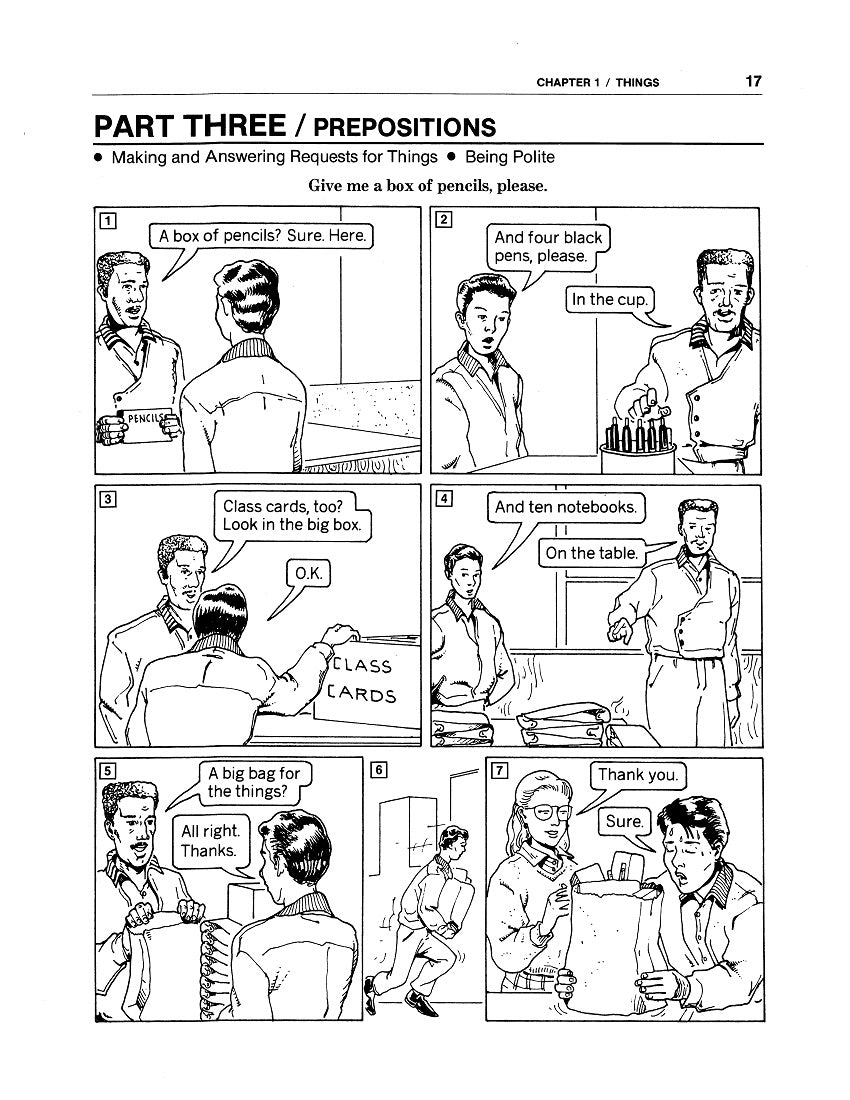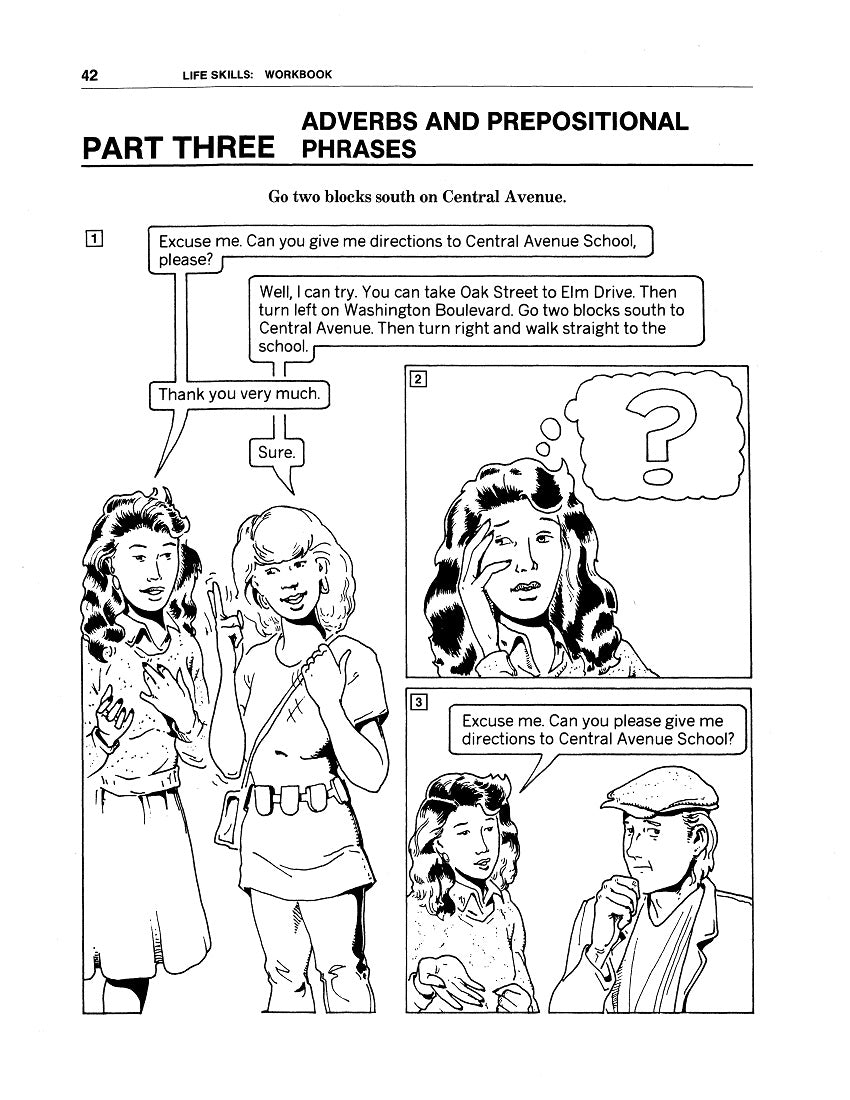1
/
of
5
Work/Life English
D-12.07 Name & Request Things with Adjectives + Nouns + Prepositional Phrases
D-12.07 Name & Request Things with Adjectives + Nouns + Prepositional Phrases
Regular price
$1.00 USD
Regular price
Sale price
$1.00 USD
Unit price
/
per
Adjectives Before Nouns; Prepositions of “Things”; Adverbs & Prepositional Phrases of “Help” - Life Skills 1
9 pages
Who It’s For: Teachers, Helpers, & Learners at Novice to Beginning Language & Literacy Proficiency Levels
Why It’s Useful: Some “secondary” (less vital) Parts of Speech that come up at the very beginning of English-language instruction are Adjectives, Prepositions, and Adverbs. Along with Nouns—and later, Imperative Verbs, these often appear in segments aimed at these basic language competencies: Describing Things; Making & Answering Requests for Things; Following & Giving Street Directions.
What You’ll Do:
[1] Read (aloud) the Thought Balloons of the page 14 Strip Story, “Six Small Cups.” Notice that all its noun phrases include the article a/an, numbers, and/or adjectives useful in “Describing Things.” Use the illustrated Grammar Explanation Boxes and the related Exercises A-B to insure understanding of both the grammar and significance of the language. Use *C to go beyond the text in naming tangible things.
[2] Read (aloud) the Speech Balloons of the page 17 Strip Story, “Give me a box of pencils, please.” Noting that many of the noun phrases include prepositions of location or purpose, in the related Grammar Box and items of Exercises A-B, identify and compare elements of phrases: (a / an) + (adjective + ) noun + preposition + (a / an / the) + (adjective + ) noun object. Use *C for listening, spelling, and writing practice.
[3] Use the page 42 Strip Story, “Go two blocks south on Central Avenue,” for speaking practice and to recognize the elements of full sentences with (subject) + imperative or simple present modal + verb (+ adverb) ( + noun object ) + prepositional phrase. By completing and checking Exercises A-D, get familiar with sentence patterns that efficiently give street directions. Use Exercise *E to practice asking and giving directions to (familiar) real places in your school or neighborhood.
Couldn't load pickup availability










